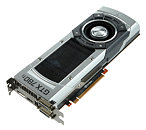Tuesday, June 17th 2014
Graphics Card Shipments to Drop Drastically in Q2 2014
Graphics card vendors are bracing for a brutal spell for Q2, 2014, in which they expect sales to sequentially drop by 30 to 40 percent. They are attributing this to swelling inventories (unsold graphics cards) lower down the supply chain. The drop in graphics card sales, for the first time, is being attributed to a drop in the demand for GPUs by crypto-currency miners, who are either moving on to more energy-efficient mining technologies, such as ASICs, or quitting the business, following the drop in value of various major crypto-currencies, such as Bitcoin. These miners end up selling high-end graphics cards at attractive prices on marketspace websites such as Ebay, affecting brand-new high-end graphics card sales. Graphics card vendors (AIB and AIC partners), have asked GPU manufacturers AMD and NVIDIA, to help them cut prices to boost sales, however, both have cut down supplies, to deal with the situation, instead. Swelling inventories often translate into price-cuts for the end users, so be on the look out.
Source:
DigiTimes

51 Comments on Graphics Card Shipments to Drop Drastically in Q2 2014
Fermis were introduced at a much lower price.
600s were introduced at a higher price and the software wasn't introduced until a few months later well after people pay the inherit hidden cost of the software at the time of purchase. Mind you that not all the features work on all the cards nor are supported by all Keplers.
How many of those 600 series users or newer would have loved to had a $50 savings rather then pay the hidden cost of the software they might use or don't even want.
building a game who can utilise all the hardware(PC) is pretty difficult atm.
it need: energy,money and alot of time..
it pretty normal hardware stop selling.
It gonna be good for us who will see price drop some days :toast:
pretty shure we gonna se some delay for the next generation (800 series)..
but nobody has ever seen those sources or spoken to those analysts.
the analysts never learn their lesson when every Quarter things are not as they predicted and
the sources sounds like someone let his kid write an article and he went to the local pub to watch the world cup.
I remember that some sources claimed that bitcoin is dying the last 2 years, litecoin is never getting an HDL algorithm and so forth.
on other words: Let's go get an AMD 290x .... (UT)DENIED, stock is low due to mining (insert facepalm here)
The folks that are looking for deals from Crypto-mining left overs, aren't necessarily those that exhibit any brand constancy. Honestly the Crypto-mining left overs might impact Nvidia the same given their prices on GK104’s are out-of-sync with the price/performance… with Crypto-mining now dead. It was okay for Nvidia to be judged a "deal" in reviews when AMD had stupid crazy retail pricing, now that AMD's are more often positioning below MSRP (or well-below here in the USA) it's just fine for Nvidia and the price/performance no-longer being part of the topic.
I think the only troll here is you.
Here's a breakdown of Mercury Research's market segment analysis from three years ago. Note the sales of entry level boards
Why not rant about the development of Bullet ? or Tokomak ? or ODE ? Havok is used in a lot more games than PhysX and doesn't do appreciably more (less in a lot of simulations) than Nvidia's (also) proprietary engine.Says the guy who's specs list SLI'ed GTX Titans. You don't think you maybe answered your own question?
Not gonna happen sonny :)
jonpeddie.com/press-releases/details/intel-gains-nvidia-flat-and-amd-loses-graphics-market-share-in-q1/
jonpeddie.com/press-releases/comments/add-in-board-market-down-in-q1-nvidia-holds-market-share/
Yes, mining cards were probably run 24/7 with every last bit of performance tweaked out of them, but I suspect those in the market for a used 290x won't even realize that could be an issue.